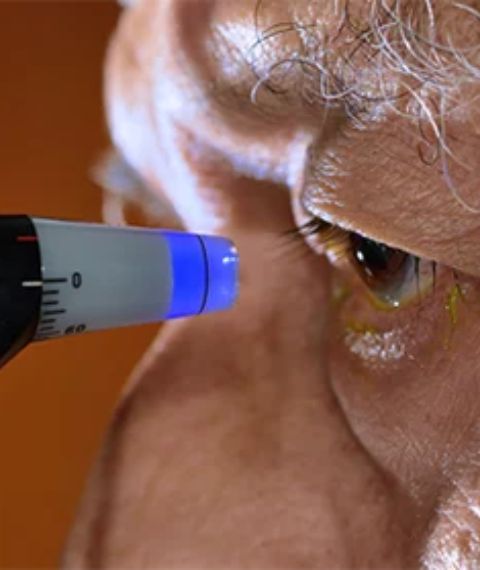Glaucoma & Eye Pressure Care – Saluja Eye Care Center, Indore

Glaucoma & Eye Pressure Care
Glaucoma is a chronic disease of the optic nerve that can silently damage vision. The goal of care is to preserve remaining sight for life through early diagnosis, timely treatment, and strict adherence to follow‑ups. This page summarizes globally accepted practices, adapted to our center’s services.
What is Glaucoma?
Glaucoma damages the optic nerve, most often due to eye‑pressure–related stress. Early disease is usually symptom‑free—hence the nickname “sneak thief of sight.” Peripheral (side) vision is affected first; reading vision changes later. Because loss is irreversible, early detection and consistent follow‑up are critical.
Who is at Higher Risk?
- Age 40+ (risk rises with age)
- Family history of glaucoma
- High eye pressure (ocular hypertension)
- Thin corneas (low pachymetry)
- Diabetes, high blood pressure, sleep apnea
- Long‑term or unsupervised steroid use (drops, tablets, inhalers, skin creams)
- Past eye injury, high myopia or hyperopia
- People noticing colored halos, eye pain/redness, or frequent headaches
Warning Signs of Acute Angle‑Closure (Emergency)
- Severe eye pain and headache
- Nausea/vomiting
- Blurred vision with rainbow halos around lights
- Red eye with rapidly worsening vision
If these occur, seek emergency eye care immediately—treatment is time‑sensitive.
Our Diagnostic Protocol
- Comprehensive slit‑lamp examination
- Intraocular pressure (IOP) measurement with calibration checks
- Gonioscopy (to determine open vs angle‑closure mechanism)
- Optic nerve evaluation on dilated exam
- OCT RNFL and optic nerve head imaging for baseline & progression analysis
- Automated visual field testing (perimetry) with reliability coaching
- Central corneal thickness (pachymetry) for true IOP interpretation
- Disc photos and risk‑stratified follow‑up scheduling
Frequently Asked Questions
No. Damage already done cannot be reversed. Treatment preserves the sight you have
Usually yes. The plan may change over time, but follow‑up is lifelong.
For many people SLT can reduce drop burden, but suitability varies. LPI is reserved for angle‑closure mechanisms.
Glaucoma is silent early on. OCT and visual fields help us detect changes months or years before you notice symptoms.
Cataract surgery can slightly lower IOP and is often a good time to consider MIGS; your surgeon will advise.
Why Choose Saluja Eye Care, Indore?
NABH-accredited Eye Care Center
• Advanced diagnostics & treatments under one roof
• Compassionate, patient-friendly approach
• Ranked among the Top 3 Eye Hospitals in Indore
• Trusted by 10,000+ patients for ethical and transparent care
We look forward to caring for your vision! 👓
Trusted Eye Care in Indore for Over 17 Years
Book Your Appointment Today
Expert doctors. Modern technology. Clearer vision starts here. Schedule your consultation with Saluja Eye Care now.
Book Appointment Call Now